

How do you define and choose the best release management tool? With so many options in the market, it can be hard to narrow down the search. Beyond leveraging the release processes across your organization to deploy at scale, you also want an intuitive tool for your teams and external partners to use regularly.
In our Release Management 101 guide, we cover the good sh*t: how a release management process minimizes release failures and increases productivity to meet business demands.
We’re back again, and this time we’ve shortlisted the top release management tools to aid your search for a long-term solution. ✨
Here are the top 10 release management tools to maximize the value of your software development processes and communication!
Top 10 release management tools
1. ClickUp

ClickUp is the ultimate productivity platform for agile teams to track releases, collaborate on sprints, and bring all work under one tool. Everyone in an organization—release managers, developers, external partners, security, and HR—can adopt ClickUp to personalize their work areas.
With ClickUp, anyone can view tasks from days to months out or get granular details on a task’s progress in a few clicks. Here are some of ClickUp’s 100+ versatile features that will align with any agile and DevOps teams needs:
- 🐱 GitHub Integration: Manage repositories, issue tracking, and technical projects without leaving ClickUp. (Learn more about how to track GitHub activity!)
- 👥 Role-Based Access Control (RBAC): Get answers to your questions about ClickUp’s security policy! ClickUp utilizes Google-supplied facilities such as organizational units, user accounts, user groups, and sharing controls to follow release management policies
- 🏃 The Sprints ClickApp: Create specialized Folders and Lists in any Space. Sprints use tasks as items of work, so you still have complete flexibility and access to all of the powerful features of ClickUp
- 🤝 Task Relationships: Link related tasks for quick reference or use them to highlight essential items for you and your team. (If a task must be completed before another one can begin, we recommend using Dependency Relationship instead!)
- 🤖 Automation: Browse through our library or create a custom release Automation. ClickUp’s automation tools can assign tasks and people based on criteria, update statuses, send emails to external partners, and more!
- 📈 ClickUp Dashboards: Add a Portfolio Dashboard widget for powerful insights on product releases, teams, or key metrics in your release process: What’s the average deployment duration? Where are manual tasks happening in each stage?
- 💬 Assign comments: Keep each other accountable for small to-dos by assigning any comment that requires action before a task can close. For easy referencing, the name of the person who resolved the comment will appear next to the checkmark
- 🎥 Clips: Record and attach a screen with audio recordings from your Chrome or Firefox browser. Simply click to record, and ClickUp Clips will automatically insert the Clip in your task
- 🤩 ClickUp Kanban boards: Wield the drag-and-drop interface to arrange tasks in vertical columns. With the Multitask Toolbar, easily select multiple tasks and make as many changes as you want. Productivity win!
- 👉 Learn how we use ClickUp, Fastlane, and GitHub Actions to automate our Continuous Integration (CI) and Continuous Delivery (CD)!
✅ ClickUp pros
- Choose from 100 native integrations along with thousands available through Zapier and Integromat for a fully automated delivery pipeline
- Get work done and on the go with the ClickUp mobile version
- Plan, manage, and accomplish your daily, weekly, quarterly, and yearly software engineering Goals
- Connect with a world-class customer support team, watch on-demand webinars, or speak with a ClickUp vetted consultant for help with the release process
- Save ClickUp’s custom templates for a scalable release management process flow (or use templates we’ve created in the Template Center)
❌ ClickUp cons
- Not all ClickUp views are available on the mobile app… yet! 🔮
💸 ClickUp pricing
- Free Forever Plan (best for personal use)
- Email in ClickUp
- Unlimited tasks and members
- Collaborative Docs
- 24/7 Support, and more
- Unlimited Plan (best for small teams) $7/member per month
- Everything in the Free Forever Plan and…
- Form view
- Unlimited Storage, Dashboards, and Custom Fields
- Agile reporting, and more
- Business Plan (best for mid-sized teams) $12/member per month
- Everything in the Unlimited Plan and…
- Custom reporting
- Advanced automation, time tracking, and Dashboard features
- Timelines, Mind Maps, and more
👉 If you need a full software suite to handle your Enterprise workloads and processes, we’d love to help set you up for success! Contact our sales team when you’re ready. 🏁
💬 ClickUp customer ratings
- G2: 4.7/5 (3,930+ reviews)
- Capterra: 4.7/5 (2,530+ reviews)
2. Azure Pipelines
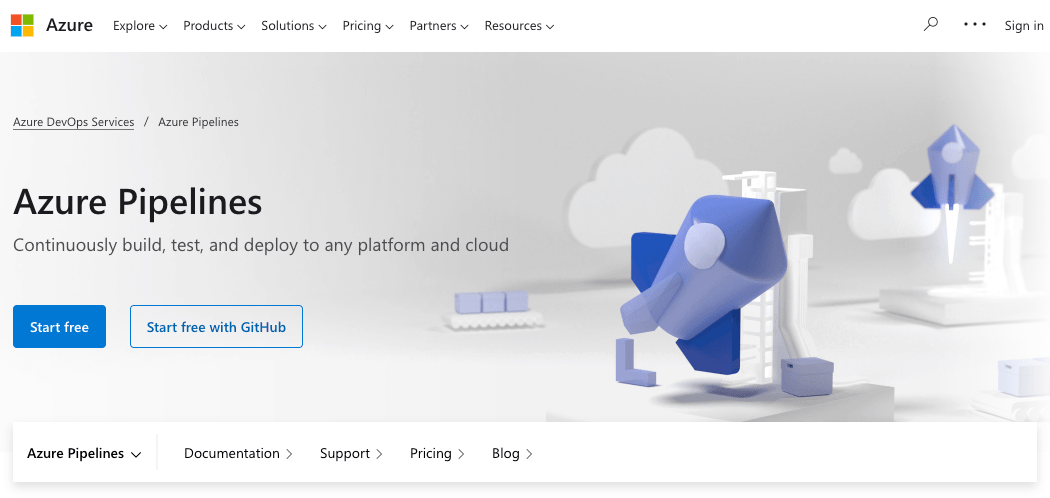
Azure Pipelines is a release management tool capable of building and deploying code written in any language using any platform. Users can create a new project with an Azure DevOps organization and source code stored in a version control system to start a Continuous Integration (CI) and Continuous Delivery (CD) release pipeline. If the project is an open source project, users get ten free parallel jobs to help speed up the build time.
✅ Azure Pipelines pros
- Deploys to different types of targets at the same time
- Linux, macOS, and Windows agents hosted by Microsoft with full CI/CD release pipeline support
❌ Azure Pipelines cons
- Difficult to grasp the core capabilities if a user is new to this type of system
- To shift to Azure Pipelines as a single project management platform, teams will need to develop workarounds or add more services for customization
💸 Azure Pipelines pricing
Azure Pipelines is free for public projects. For custom quotes, inquire with Azure Pipelines.
💬 Azure Pipelines customer ratings
- G2: 4.5/5 (30+ reviews)
- Capterra: 4.4/5 (600+ reviews)
3. Jira

Atlassian’s Jira Software is an issue-tracking platform that can automate code throughout the entire lifecycle with Bitbucket Cloud’s built-in Continuous Integration (CI) and Continuous Delivery (CD) tool, Bitbucket Pipelines, or Jira partners. It supports development teams, but they’ll need to integrate with a project management tool like Trello (another Atlassian product) to collaborate with non-product teams across the organization.
✅ Jira pros
- Assign tasks or create Jira issues directly from your pull request
- Incident Report Dashboard to resolve code deployment issues faster
❌ Jira cons
- Non-product teams might have to use multiple applications for straightforward work management and to avoid overly complex workflows
- The steep learning curve for Jira admins to learn, implement, and train team members
💸 Jira pricing
Jira has a limited free plan. For custom quotes, inquire with Jira.
💬 Jira customer ratings
- G2: 4.2/5 (4,490+ reviews)
- Capterra: 4.4/5 (11,270+ reviews)
👉 Check out these Jira Alternatives!
4. Chef
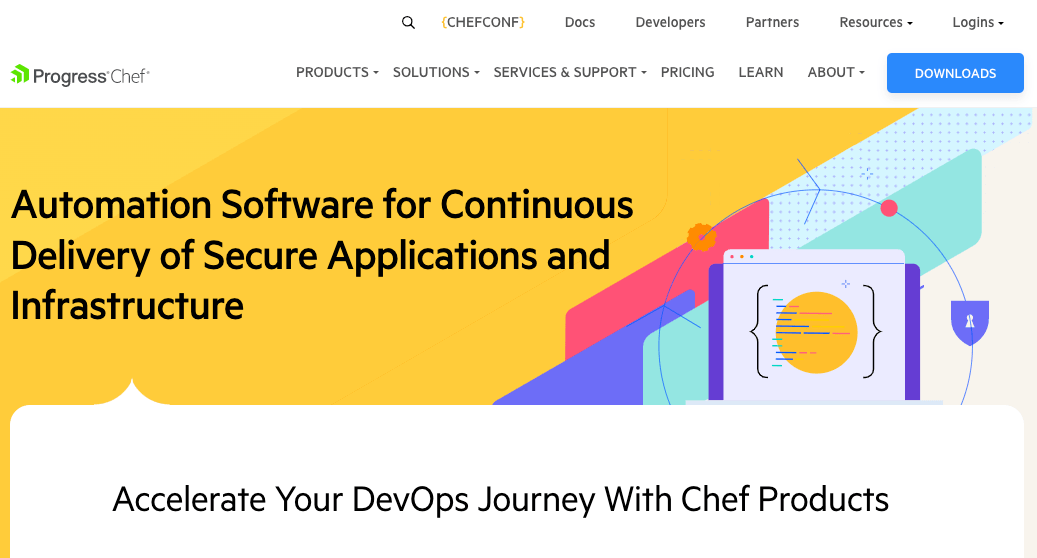
The next release management tool on our list is Chef, a product under the Progress portfolio providing organizational alignment with a standard tool-set and infrastructure library for Application, Security, and Operations teams. In addition, their business and technical solutions have deployment automation that takes teams all the way from development to production.
✅ Chef pros
- DevOps dashboards for validation across infrastructure and applications
- Define policies as code to reduce compliance testing time
❌ Chef cons
- Newly acquired by Progress (too soon to measure its development)
- Other release management tools are needed to complete software releases
💸 Chef pricing
Chef does not have a free plan or freemium version. For a custom quote, inquire with Chef.
💬 Chef customer ratings
- G2: 4/5 (40+ reviews)
- Capterra: N/A
5. Ansible

Ansible is an enterprise IT automation solution from Red Hat. Under a single tool, teams have the flexibility to automate tasks across IT departments and domains. It’s simple to deploy using the YAML language and works by connecting to your nodes and pushing out small programs written to be resource models of the system’s desired state.
✅ Ansible pros
- Create “plays”, which select a particular group of hosts and assign tasks to execute or roles for them to fulfill
- Split your Ansible inventory to slice your production environment up into different groups of machines
❌ Ansible cons
- No free plan or freemium version
- Built for a specific use case (IT environment)
💸 Ansible pricing
Red Hat Ansible Automation Platform has a limited product trial. For a custom quote, inquire with Red Hat.
💬 Ansible customer ratings
- G2: 4.5/5 (100+ reviews)
- Capterra: 4.5/5 (30+ reviews)
6. Plutora

Plutora helps teams improve software releases by creating complete visibility and organization for in-house tools and business logic. The software development process combined with Plutora’s features (release calendars and analytics dashboards) takes the guesswork out of the release. As teams and release processes evolve, Plutora is built to grow with them.
✅ Plutora pros
- Consolidated release calendar aligns resources across the portfolio
- Automated role-based reporting keeps stakeholders informed of application health and release status
❌ Plutora cons
- Requires release processes experience to learn, implement, and teach team members
- No free plan or freemium version
💸 Plutora pricing
For a custom quote, inquire with Plutora.
💬 Plutora customer ratings
- G2: N/A
- Capterra: N/A
7. Spinnaker
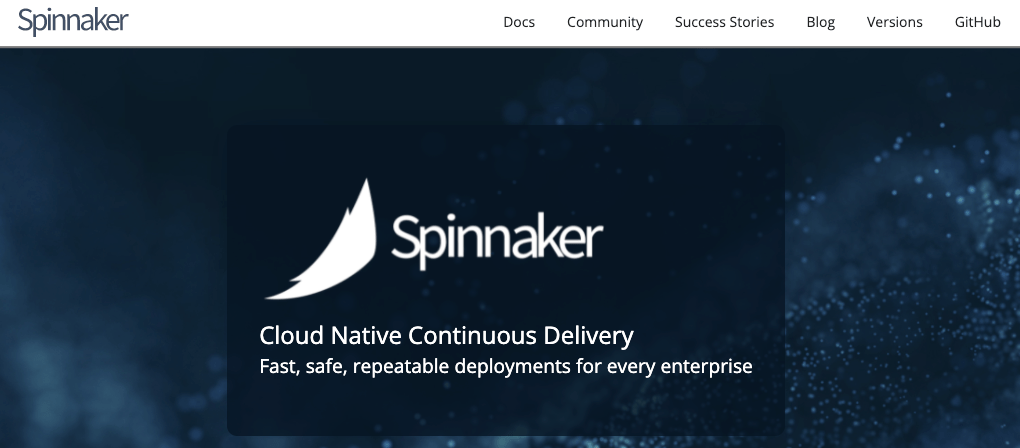
Spinnaker is an open source, multi-cloud continuous delivery platform for releasing software changes. A Spinnaker application models the concept of operating a collection of services (applications or microservices). It’s built to lift the manual burden of development teams with two core sets of features: application management and application deployment.
✅ Spinnaker pros
- Offers deployment across multiple cloud providers, including Google Apple Engine, Microsoft Azure, Oracle Cloud Infrastructure, and more
- Ability to restrict the execution of stages to specific windows of time
❌ Spinnaker cons
- While the Spinnaker tool is free for open source projects, there’s a time cost for developers to learn and install
- Requires upgrades, more engineers, and maintenance to scale
💸 Spinnaker pricing
Spinnaker is free.
💬 Spinnaker customer ratings
- G2: 3.9/5 (10+ reviews)
- Capterra: N/A
8. Octopus Deploy
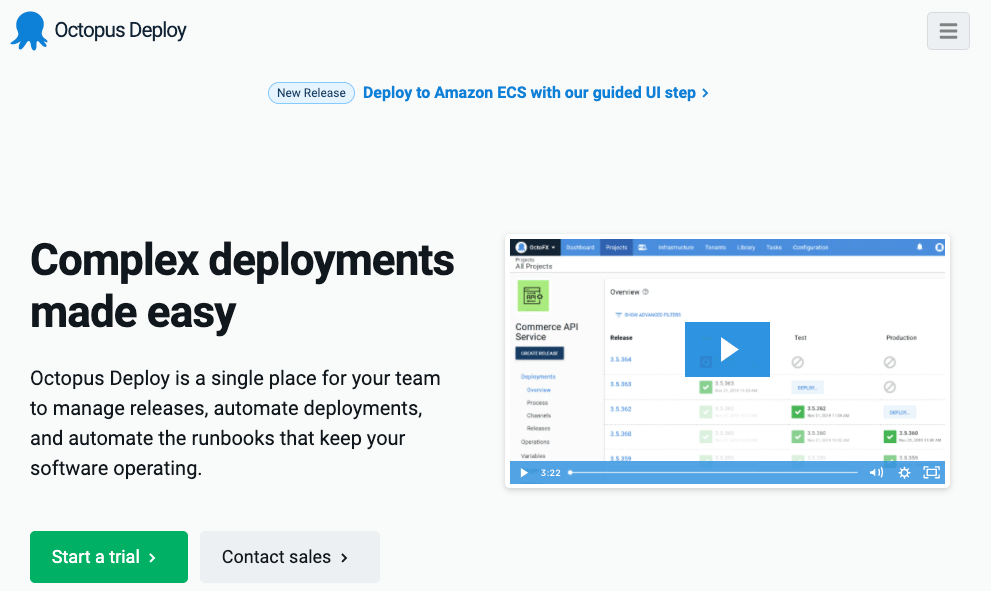
Octopus Deploy, an independent vendor, is a single platform for teams to manage release pipelines, control software development, and automate runbooks to keep the release cycle operating. Additionally, developers can build a customized tutorial for their Continuous Integration (CI) and Continuous Delivery (CD) stack.
✅ Octopus Deploy pros
- Supports advanced deployment patterns
- Consistent release promotion across environments, manual approvals, and release notes
❌ Octopus Deploy cons
- Bug tracking, source control, and build/CI release automation are not available solutions through Octopus Deploy
- Expensive paid plans
💸 Octopus Deploy pricing
Octopus Deploy offers a free 30-day trial and paid plans starting at $50/month.
💬 Octopus Deploy customer ratings
- G2: 4.4/5 (40+ reviews)
- Capterra: 4.8/5 (10+ reviews)
9. Digital.ai Release
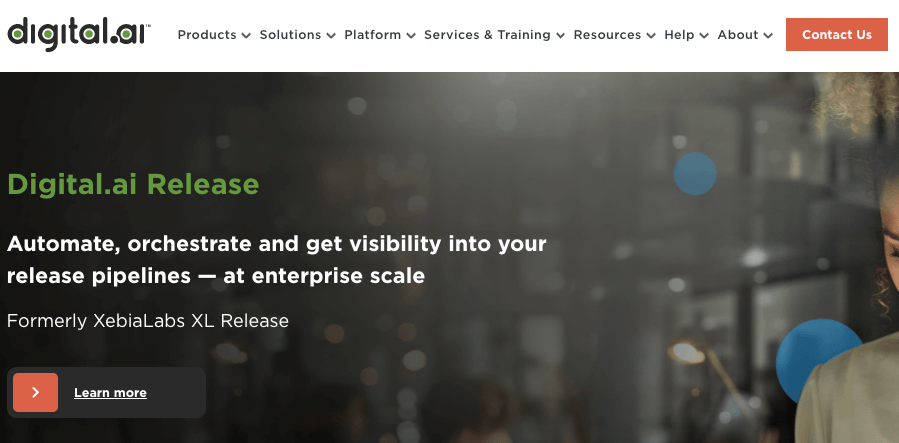
Digital.ai Release provides release management and orchestration solution using release automation to accelerate delivery and reduce risk. It’s designed to support teams at any level of Continuous Delivery maturity for insight into software delivery processes from end to end.
✅ Digital.ai Release pros
- Automated reports and compliance evidence for IT auditors
- Fully customizable dashboards to view data from all DevOps tools
❌ Digital.ai Release cons
- No free plan or freemium version
- The interface isn’t user-friendly compared to other release and deployment management tools on this list
💸 Digital.ai Release pricing
For a custom quote, inquire with Digital.ai Release.
💬 Digital.ai Release customer ratings
- G2: 4/5 (2 reviews)
- Capterra: N/A
10. Jenkins

Jenkins is an open source automation server enabling developers worldwide to build, test, and deploy their software reliably. With hundreds of plugins in the Update Center, Jenkins integrates with other software in the Continuous Integration (CI) and Continuous Delivery (CD) toolchain.
✅ Jenkins pros
- Jenkins Pipeline: a suite of plugins that supports implementing and integrating continuous delivery release pipelines into Jenkins
- Library of plugins to work towards building a dynamic application deployment tool
❌ Jenkins cons
- The interface isn’t user-friendly compared to other release and deployment management tools on this list
- As a community-driven tool, troubleshooting support can be complicated
💸 Jenkins pricing
Jenkins is free.
💬 Jenkins customer ratings
- G2: 4.4/5 (370+ reviews)
- Capterra: 4.5/5 (380+ reviews)
There you have it—the top ten best release management tools!
Considerations for choosing release management tools
Not all release management tools were created equal. Here are the must-have agile features that are essential for continuous delivery success:
- Whiteboards for brainstorming and ideation
- Collaborative docs for SOPs, project briefs, and internal/external communications
- Team and individual workload views to align with the development plan
- Dependencies and time estimates for task assignments
- Spaces to separate team workflows but still cross-collaborate as needed
- Automations to reduce or eliminate the manual effort required to perform simple tasks
- Sprints, Kaban boards, and dashboards to view agile metrics in one place
- Ongoing product support
By now, you have two or three release tools in mind. But which is the rock-solid solution that not only will align with existing workflows but work for both technical and non-technical users in your organization? 🤔
Let’s briefly go over the benefits to expect with the proper release management tool:
- Quick adoption for internal teams and external partners
- Increased and streamlined communication between cross-functional teams
- Automatic status updates for task tracking
- Better resource and skills management to retain talent
- Detailed release and deployment data
- Value stream analysis to pinpoint improvement opportunities
- Visibility into workflows and bottlenecks through real-time reporting and records management
- Shipping software quickly and efficiently
- Emerging change ambassadors to navigate growth over time

A quick start guide to choosing a release management tool
As the release manager, it’s not a simple path to a decision. On top of juggling several systems, groups of projects, and operations, you have a “look for a release management tool” on your list. 😮💨
What will ultimately determine success is the transformation the release management tool will make to your team and projects. The good news is that this is not a one-person task! So here’s a quick start guide to start on the right foot and save hours of research:
1️⃣ Begin your search by recognizing what issues this release management tool will solve. The people who will rely on the tool to get their work done on a day-to-day basis and others that will come in regular contact with it are the most important folks to connect with!

2️⃣ Evaluate the form submissions and gather key takeaways to select suitable options. For example, if the majority list they need subtasks, you can pass over any tools that don’t have that feature. Don’t forget to add your thoughts as well! You’re in the mix of technology and teams, so your perspective is valuable. Think back to past projects that highlighted areas of opportunity and ad hoc conversations with team members about release process improvements.

3️⃣ Create a comparison table of the best release management tools and share this information with team leads and the decision-makers.
Tip: Seek out a small group of enthusiastic ambassadors that can train and motivate others after the new software is introduced. They’ll be able to provide one-on-one support that wouldn’t be possible for everyone.

ClickUp for release management
There is a reason why users who’ve previously used Jira and tools alike have switched to ClickUp: they can accomplish all their objectives in one platform. By automating processes and minimizing release complexities, they scale faster and safer. Companies worldwide love the time back, expenses saved, and competitive advantage from using ClickUp.
Your software discovery search ends on a good note today—start for free in ClickUp! 👩💻


Questions? Comments? Visit our Help Center for support.